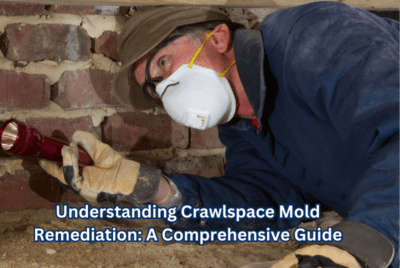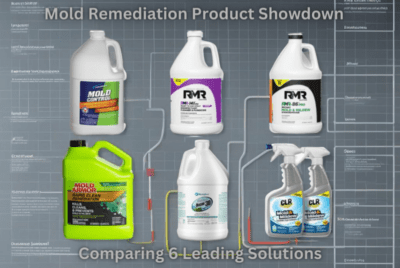How to Get Rid of Mold Spores In The Air
Are you curious and concerned about how to get rid of mold spores in the air? Join us as we delve into this important topic. Mold spores are tiny airborne particles that can cause a range of health problems and can be especially troublesome for individuals with respiratory conditions. In this article, I will guide you through the process of understanding mold spores, detecting their presence, and providing effective strategies to get rid of them. By implementing these suggestions, you can create a healthier living environment for you and your loved ones.
Understanding Mold Spores
Mold spores are microscopic reproductive structures produced by mold colonies. They are lightweight and can easily become airborne, allowing them to spread and colonize new areas. Mold spores are everywhere, both indoors and outdoors, and they thrive in damp and humid environments. When mold spores land on a suitable surface with sufficient moisture, they can grow into mold colonies and release more spores into the air.
Health Risks of Mold Spores
Exposure to mold spores can have adverse effects on our health. For individuals with allergies or asthma, mold spores can trigger or worsen symptoms such as coughing, wheezing, nasal congestion, and skin irritation. Prolonged exposure to high levels of mold spores may even lead to more severe respiratory issues. Additionally, some types of mold produce mycotoxins, which can cause allergic reactions and other health complications when inhaled or ingested.
Sources of Mold Spores
To effectively combat mold spores in the air, it is important to understand their sources. Mold spores can enter our homes through various means, such as open windows and doors, HVAC systems, pets, or on our clothing. Additionally, moisture-related issues like leaks, condensation, or high humidity levels can contribute to mold growth and the release of more spores into the air.
Detecting Mold Spores in the Air
It is essential to detect the presence of mold spores in the air to take appropriate actions. Here are two common methods for detecting mold spores:
Visual Inspection
Perform a visual inspection in areas prone to moisture, such as basements, bathrooms, and kitchens. Look for signs of mold growth, including discoloration, musty odors, or visible patches of mold. However, keep in mind that not all molds are visible, and some may grow in hidden areas like behind walls or under carpets.
Professional Testing
Consider hiring a professional mold inspector to conduct air quality testing. They will collect air samples and analyze them in a laboratory to etermine the concentration of mold spores in the air. This method provides a more accurate assessment of the mold spore levels and can help identify the specific types of mold present.
Preventing the Presence of Mold Spores
Prevention is key when it comes to dealing with mold spores in the air. By taking proactive measures to control moisture and improve ventilation, you can significantly reduce the likelihood of mold growth and spore release. Here are some effective strategies:
Controlling Humidity
Maintain indoor humidity levels below 50% to discourage mold growth. Use dehumidifiers in damp areas, such as basements, and ensure proper ventilation in rooms where moisture accumulates, like bathrooms and kitchens. Fix any leaks promptly and address water damage immediately.
Improving Ventilation
Proper airflow helps prevent moisture buildup and keeps the air fresh. Use exhaust fans in bathrooms and kitchens to remove excess humidity. Open windows and doors when weather permits to promote air circulation. Consider installing a whole-house ventilation system for comprehensive air exchange.
Regular Cleaning and Maintenance
Regularly clean and inspect areas prone to mold growth, such as bathrooms, basements, and attics. Remove any visible mold promptly using appropriate cleaning solutions. Keep surfaces dry and clean, especially in areas where moisture is common. Regularly clean and replace air filters in HVAC systems to prevent the circulation of mold spores.
Getting Rid of Mold Spores in the Air
If you already have mold spores in the air, it’s crucial to take action to eliminate them. Here are some effective methods:
Air Purifiers and Filters

Invest in high-quality air purifiers with HEPA filters. These devices can effectively capture mold spores and other airborne particles, improving air quality. Place air purifiers strategically in rooms with a high risk of mold spores, such as basements or rooms with visible mold growth.
Natural Remedies

Certain natural remedies can help to get rid of mold spores from the air. Tea tree oil, vinegar, and hydrogen peroxide have antimicrobial properties that can inhibit mold growth. Dilute these solutions with water and use them as sprays to target areas with mold spores. However, it’s important to note that natural remedies may not be as effective as professional solutions for extensive mold issues.
Professional Mold Remediation

For severe mold problems, it’s best to seek professional help. Certified mold remediation specialists have the expertise, equipment, and knowledge to safely remove mold colonies and spores from your home. They can assess the extent of the mold infestation, perform thorough remediation, and provide recommendations to prevent future mold growth.
Maintaining a Mold-Free Environment
Once you have successfully dealt with mold spores in the air, it’s essential to maintain a mold-free environment to prevent their return. Here are some tips:
Monitoring and Regular Inspections
Continue to monitor moisture levels in your home and conduct regular inspections for any signs of mold growth. Be vigilant, especially in areas that were previously affected. Promptly address any leaks or moisture issues to prevent mold recurrence.
Proper Ventilation and Moisture Control
Continue practicing good ventilation habits by using exhaust fans, opening windows, and utilizing whole-house ventilation systems. Keep indoor humidity levels in check and promptly address any moisture-related problems. Proper insulation and sealing can also help prevent condensation and moisture buildup.
Conclusion
Getting rid of mold spores in the air is crucial for maintaining a healthy living environment. By understanding the sources of mold spores, detecting their presence, and implementing effective prevention and removal strategies, you can significantly reduce the risk of mold-related health issues. Remember to regularly monitor your home, maintain proper ventilation, and seek professional help when needed to ensure a mold-free and breathable space.
FAQs
1. **Can mold spores be completely eliminated from the air?
Mold spores exist naturally in the environment, so it is challenging to completely eliminate them from the air. However, by implementing preventive measures and using air purifiers with HEPA filters, you can significantly reduce their concentration and create a healthier indoor environment.
2. **Are all mold spores harmful to health?
Not all mold spores are harmful to health, but some can cause adverse reactions, especially in individuals with allergies or respiratory conditions. Additionally, certain types of mold produce mycotoxins, which can pose health risks when inhaled or ingested. It’s important to address mold issues promptly to minimize potential health effects.
3. **Can I remove mold spores by cleaning surfaces alone?
While cleaning surfaces can remove visible mold, it may not eliminate all mold spores in the air. Mold spores are lightweight and can easily become airborne, spreading to other areas. To effectively address mold spores, it is crucial to improve ventilation, control humidity, and use air purifiers or seek professional mold remediation if necessary.
4. **How often should I inspect my home for mold growth?
Regular inspections are essential to detect mold growth early. It is recommended to inspect your home at least once every six months, paying close attention to areas prone to moisture, such as bathrooms, basements, and kitchens. Promptly address any signs of mold, such as musty odors or discoloration, to prevent further spread.
5. **Can I use bleach to remove mold spores from the air?
Bleach is effective in killing mold on non-porous surfaces but is not suitable for airborne mold spores. Additionally, bleach can release harmful fumes and may damage certain materials. It’s best to consult with professionals or use specialized products recommended for mold remediation to address mold spores in the air effectively.




